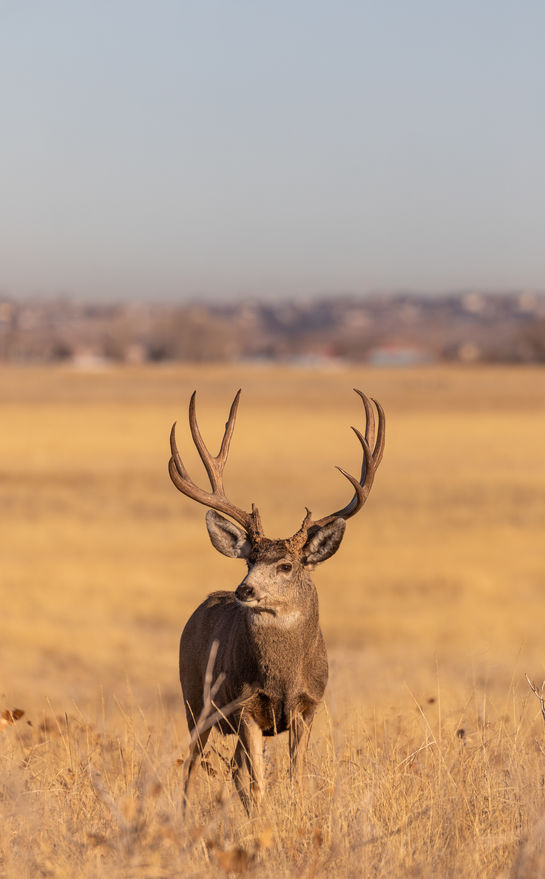The rut changes everything. One week, a mature buck is a ghost — moving only at night, slipping silently through heavy brush, impossible to spot. Then rut season hits, and suddenly, that same buck is cruising open trails in broad daylight, chasing does and challenging rivals. It’s an incredible time to be in the Texas Hill Country.
At Schmidt Double T Ranches, we’ve spent years watching, tracking, and guiding hunters during peak rut. And while the bucks may move differently this time of year, success still depends on understanding behavior and making smart choices in the field. If you’re planning a Texas whitetail hunt during peak rut, here are some tips to help you zero in on those mature bucks.

Understand When Rut Really Peaks Around Here
In our part of Central Texas — around Mason and Menard — the peak rut usually happens between mid-November and early December. While pre-rut activity starts a bit earlier, this is the stretch when bucks get most aggressive and the big guys start showing themselves more often.
Unlike other times of the season, during peak rut, bucks are less predictable but much more visible. The trick is knowing where to look and how to time your hunts.
How Big Bucks Act During Rut (And Why It Matters)
Rut doesn’t just change deer behavior — it flips it on its head.
They Move More and Take Risks
The mature bucks you’ve only caught on camera at night will start moving in daylight, driven by the need to find does and push off rival bucks. That means more chances for sightings — if you’re in the right place.
They Follow the Ladies
One of the best ways to spot a mature buck is to focus on does. Bucks will cruise known feeding areas, water sources, and bedding zones where does tend to hang out. Spot the does, and a buck is usually close behind — sometimes just minutes.
They React to Competition
During rut, mature bucks respond more aggressively to other deer — whether it’s the sound of antlers clashing or a grunt from a younger buck. This gives hunters a short window to use rattling and calling to their advantage, something we guide our clients through during hunts.
Where to Watch: Patterns That Still Hold True
Even in the chaos of rut, bucks still follow certain terrain features and habits — especially in the Hill Country.
Funnel Zones
Natural pinch points like dry creek beds, saddles, and narrow strips between bedding and feeding areas are prime real estate. Bucks like to move through cover when they can, so finding a good funnel lets you intercept them without pushing them out.
Scrapes and Rubs
Though less active during peak breeding, scrapes and rub lines still tell a story. They help you identify which bucks are active in the area and give you a starting point for stand placement. If we’re seeing fresh sign, it’s a good bet the buck is still close.
Edges of Cover
Mature bucks often skirt just inside the brush line — using the safety of cover while staying close to open areas where does might feed. On our ranch, we’ve set up blinds and stands with these patterns in mind, giving hunters a good angle without overexposing them.
Tactics That Work at Schmidt Double T Ranches
Our guides live and breathe whitetail movement, especially during rut. Here are a few tactics we use — and recommend — for spotting mature bucks at the height of the season.
Stay in the Stand Longer
This can’t be said enough: mature bucks don’t always move at dawn or dusk during rut. Some of our biggest sightings happen mid-morning or after lunch. If you can stick it out for a full day sit, you’re stacking the odds in your favor.
Call with Confidence
This is one of the few times of year when calling works well — especially when paired with the right setting and timing. We’ve had great success using rattling antlers to simulate a fight, followed by soft doe bleats or grunts to paint a full picture. But like anything in hunting, it’s all about subtlety and reading the response.
Watch the Wind and Use Scent Wisely
Even when their guard is down, mature bucks don’t lose their nose. Make sure the wind is in your favor and your scent control game is on point. Estrus scent can help, but only if it’s used smartly — and not overdone. We’ll help you deploy it effectively if you’re hunting with us.
Experience It Firsthand in Texas Hill Country
There’s nothing quite like watching a mature buck chase a doe across a clearing or seeing antlers glint in the early morning light. Peak rut is thrilling, unpredictable, and unforgettable — and at Schmidt Double T Ranches, we’re proud to offer some of the best opportunities in the state to hunt mature whitetails during this time.
With carefully managed herds, ideal terrain, expert guides, and strategically placed stands, we give hunters every opportunity to see and harvest the kind of buck they dream about.
Ready to hunt during peak rut? Give Schmidt Double T Ranches a call at (325) 347-2612 to book your spot. But don’t wait too long — this season only comes once a year, and the big bucks don’t stay visible forever.